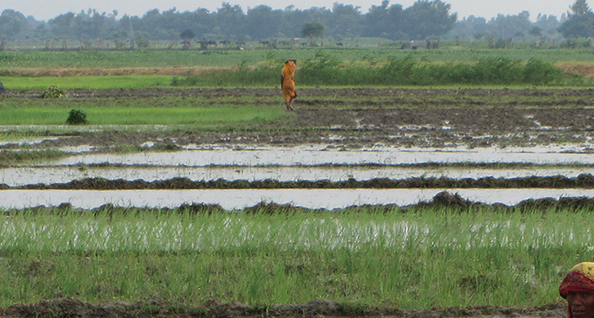With the help of CELT, I spent my summer working in India with an amazing non-profit organization called Humanure Power (HP). The organization works alongside rural Indian communities to provide access to basic sanitation by building toilets. Over 650 million Indians defecate outside on a daily basis, which results in over 100,000 tons of untreated human waste left out in the open. This leaves millions of Indians exposed to numerous health risks.

After volunteering this past year in New Orleans as the design director for HP working on marketing and branding, I became committed to the project. However, once I realized the potential to apply my architectural skill set beyond the classroom towards a public health issue that can change and enhance the quality of life for Indians, I joined the team, and I decided to go to India.
The Humanure Power Summer Team consisted of eight talented individuals with a variety of skills in many areas, including education, film, public health, international development, engineering, and architecture. We worked in the state of Bihar, which is currently the poorest in India. Like many states in India, Bihar lacks the most basic infrastructure and sanitation. In order to address this issue, the team focused on two tasks for the summer: the community toilet block design and a community education program.
As the architect, I was a part of the design team with two other HP team members, one with a background in civil engineering and the other in environmental engineering with a Masters of Public Health. This diverse set of knowledge allowed for a dynamic design process. Each team member brought his or her own approach to the discussions, which allowed us to learn from one another and find effective solutions for the challenges we met along the way.

Our first and probably biggest challenge was presented to us on our first visit to the site. The site was in a village called Nimua. Nimua is a community with just over of 2,000 people, and 90% of the residents do not have access to a toilet. Human waste deposited on the sides of the roads is a normal sight for these villagers.
As the team was welcomed into the community by a mass of children and their families, I noticed them all pointing at the site. The entire site was covered in a foot of water. Not expecting to have a flooded site, the design team had to develop a different strategy for construction. We collaborated with the community to help us find the answer to building on a flooded site. We knew that building on a site with water was going to be a challenge, but once we consulted with the community members, local engineers, and the HP team, a decision was made. Instead of building with water on the site, the construction would happen once the monsoon season was over. While we were met with some resistance from community members eager to start building, they ultimately agreed it would be more productive to wait until the site was dry.
While the task seemed daunting, it was important to understand our work in Nimua was a community effort between Nimua community members and HP team members. This collaboration is crucial to the success of the project. The community toilet block needs the support and guidance of Nimua, in order for the project to sustain itself. This will contribute to the community’s sense of ownership over the toilet block and start to restore dignity.

As outsiders to the community, we went in with a plan. However, we soon realized our plan was not created with the community, so it ultimately meant nothing. We, HP members and the people of Nimua, worked together to design a community toilet block, create an education curriculum, and begin to end outdoor defecation.
Ultimately, I was a part of an effort that designed toilets to increase the safety of community members, increase female education retention, improve workday productivity, and decrease the prevalence of waste-borne diseases. This is what it meant to BiHar.
Check out Emma’s blog for more updates!
